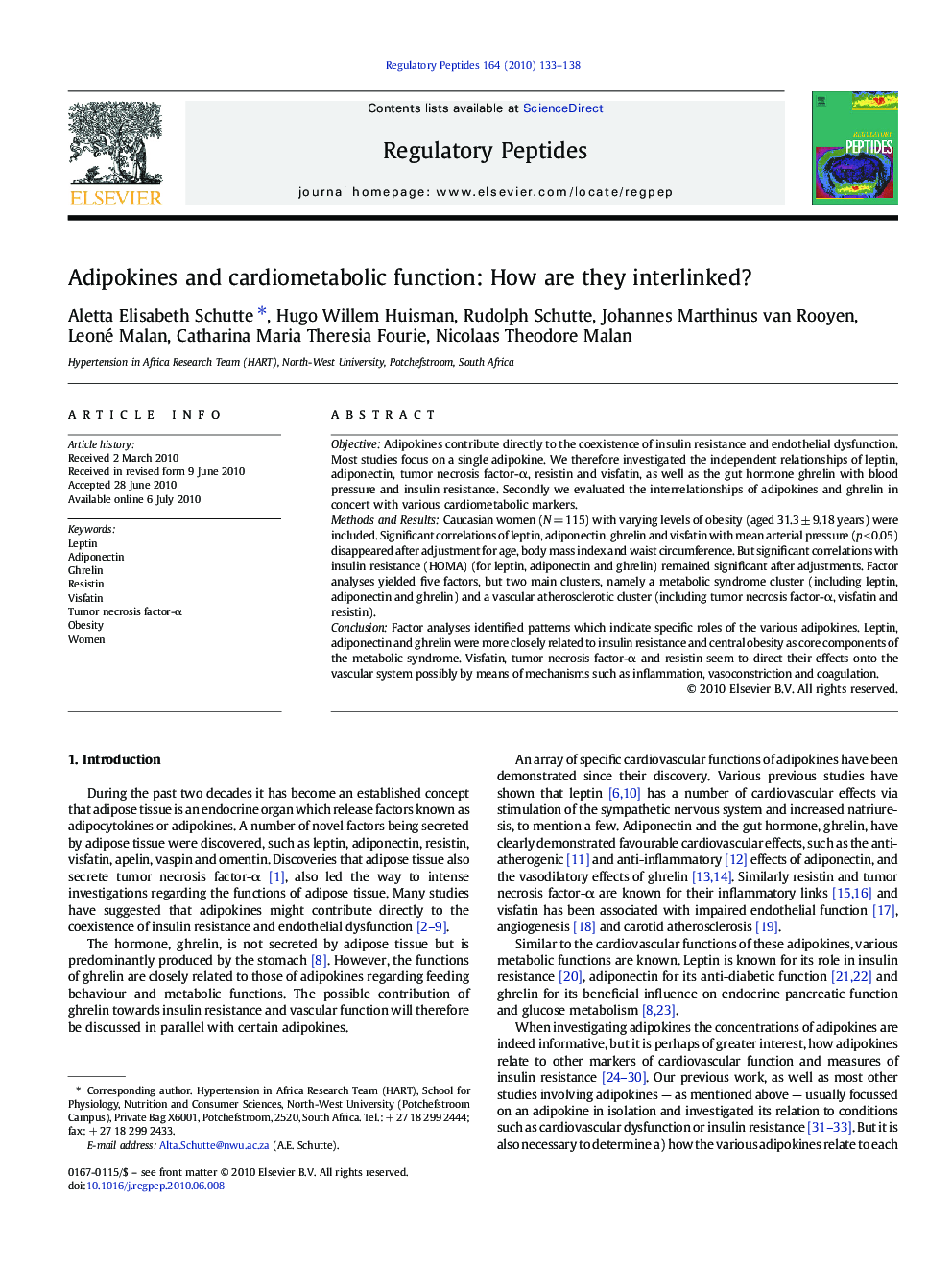| Article ID | Journal | Published Year | Pages | File Type |
|---|---|---|---|---|
| 2022823 | Regulatory Peptides | 2010 | 6 Pages |
ObjectiveAdipokines contribute directly to the coexistence of insulin resistance and endothelial dysfunction. Most studies focus on a single adipokine. We therefore investigated the independent relationships of leptin, adiponectin, tumor necrosis factor-α, resistin and visfatin, as well as the gut hormone ghrelin with blood pressure and insulin resistance. Secondly we evaluated the interrelationships of adipokines and ghrelin in concert with various cardiometabolic markers.Methods and ResultsCaucasian women (N = 115) with varying levels of obesity (aged 31.3 ± 9.18 years) were included. Significant correlations of leptin, adiponectin, ghrelin and visfatin with mean arterial pressure (p < 0.05) disappeared after adjustment for age, body mass index and waist circumference. But significant correlations with insulin resistance (HOMA) (for leptin, adiponectin and ghrelin) remained significant after adjustments. Factor analyses yielded five factors, but two main clusters, namely a metabolic syndrome cluster (including leptin, adiponectin and ghrelin) and a vascular atherosclerotic cluster (including tumor necrosis factor-α, visfatin and resistin).ConclusionFactor analyses identified patterns which indicate specific roles of the various adipokines. Leptin, adiponectin and ghrelin were more closely related to insulin resistance and central obesity as core components of the metabolic syndrome. Visfatin, tumor necrosis factor-α and resistin seem to direct their effects onto the vascular system possibly by means of mechanisms such as inflammation, vasoconstriction and coagulation.
